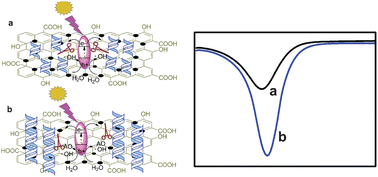Bionic radical generation and antioxidant capacity sensing with photocatalytic graphene oxide–titanium dioxide composites under visible light
Abstract
OH radicals as reactive oxygen species in an organism were applied to assay antioxidant capacity since the obtained results present high biological relevance. As a proper photocatalyst, titanium dioxide was employed to generate OH radicals under ultraviolet light irradiation. However, ultraviolet light can damage molecular probe (DNA or protein) during the detection of antioxidant capacity, which interferes with the results. In this article, a novel composite graphene oxide–titanium dioxide (GO–TiO2) nanostructure was synthesized, which can generate numerous OH radicals just under visible light irradiation. In addition, a novel electrochemical antioxidant capacity sensor was designed with GO–TiO2 composites as source of OH radicals and DNA as a molecular probe. Antioxidants were measured by using the suppression of the decline of reduction current of methylene blue used as an intercalating agent for DNA after irradiation and ˙OH-mediated DNA damage. Using gallic acid (GA) as a mode antioxidant species, the detection of GA at levels as low as 0.85 mg L−1 was possible. The antioxidant capacity of other antioxidants was also assayed. Finally, the novel sensor was applied to the determination of antioxidant capacity in tea.

- This article is part of the themed collection: Smart Surfaces 2012: From Light To Life

 Please wait while we load your content...
Please wait while we load your content...